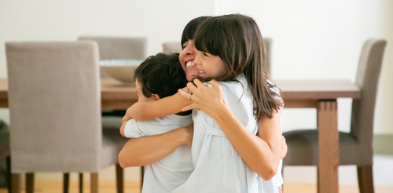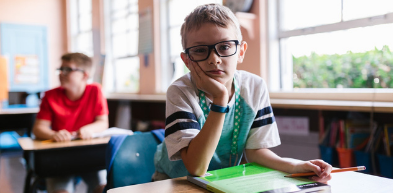
Recognising and Supporting Anxiety
Many of us are currently feeling highly anxious and some of our behaviours have changed not only because of lockdown but because we are experiencing raised anxiety.
Recognising and supporting anxiety
We know that behaviour is a form of communication and for many autistic children and young people it can be even more significant. If you live and learn with autistic young people, you will be used to interpreting their behaviours “through the autism lens”.
Their behaviour may be about communicating that they:
- Want something! Food, a preferred item, access to an activity, for you to go away and so on
- Need to increase or reduce sensory stimulation!
- Are desperate to avoid something and want to escape!
- Are being prevented from doing what they want
Or to show that they are feeling worried, stressed and anxious!
At a time when none of us can be sure what’s happening in the medium term it’s helpful to return to basics for autistic young people and consider how we can understand and support their anxieties.
The first step is to prevent and reduce as much anxiety as possible:
Autistic people respond well to structure, predictability and routine. This different way of thinking and responding is fundamental and can be supported once recognised and understood.
We are all finding ourselves establishing a “new normal” for ourselves and for our families…but also recognising that there are changes ahead. As I write schools are trying to plan for more children to return in June whilst keeping children, staff and the wider community safe.
Over the years I have come to recognise that using a structure or framework can provide that predictability and consistency, whilst the content can vary and so be flexible and responsive to change.
A simple example would be a shopping list: the list is what I need to make shopping bearable/understandable/ effective/efficient and reasonably priced. But what I include on my shopping list can vary from trip to trip. Sometimes I will put something on my list but when I get to the store the item is unavailable so I need to choose an alternative ….maybe I can do that or maybe I’ve made a note on my list of possible options.
So using a structure for a schedule and for a break down of activities can be a flexible tool that helps reduce anxiety. It’s often what the young person is used to at school. Flexibility is provided through differing the content from day to day, using choice options, question marks representing not yet known times and other visuals as appropriate. Remember that most autistic young people will accept visual information more willingly than the spoken or signed word from parent or teacher!
Secondly we can offer the best support when we really know and understand these young people, and recognise what they are communicating to us …maybe through words but more significantly through behaviour.
- Many young people may be feeling more anxious because they have absorbed that message from their parents; they may not understand why they are anxious
- Confusion and anxiety can very difficult to support
- So support about what their anxiety is actually about: it may be the dangers of the virus or it may be that it’s because their routine of going to school has changed or that they can’t go to McDonalds etc. Making their anxiety explicit and clear is helpful because then we can use other strategies to help mitigate that anxiety.
- Providing visual information such as Social Stories is a very helpful tool as it provides accessible, unambiguous and consistent advice for the young person. For example a narrative (in text, comic strips, pictures... whatever is appropriate) explaining that McDonalds is closed because the kitchens are too small for lots of people to work in, but that when that’s been worked out then maybe take always will re-open and then the restaurants. No-one knows yet when it will be but in the meantime the family will have home MacD once a week (and this could become a learning activity to make logos, boxes for burgers etc)
- For older or more intellectually able young people it may well be appropriate to access more information about the virus and to follow the science. Obviously this must depend on the individual but generally knowledge and familiarity can help reduce anxiety.
Finally, some young people have really begun to struggle with the current situation and autistic individuals are included in that.
Changes in behaviour, reduction in tolerance of others, increased agitation and other escalations within the individual’s profile can indicate that some additional interventions may help. Suggestion here would include increasing the amount of physical activity (or intensifying what they do already by encouraging wearing a weighted rucksack), breaking up the structure of day into smaller segments and negotiating more activities, or allowing more of preferred activities. I can’t imagine any teacher failing to understand that, at times during lockdown, autistic young people have had more access to their iPad, videos or other preferred activities. Let’s be honest we’ve all had to indulge ourselves in order to get through this!
And the Autism Education Trust free resources can really help. Our free version of the AET popular Tools for Teachers resource includes example social stories about Coronavirus and schedules as described above.


